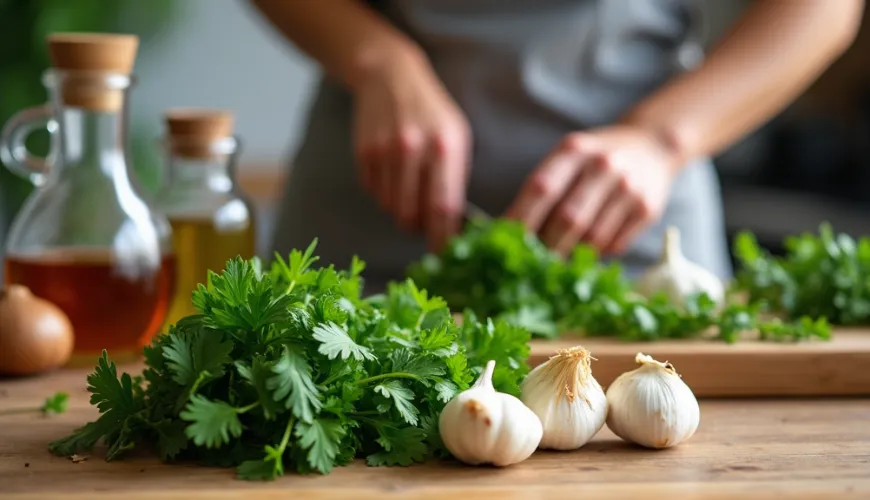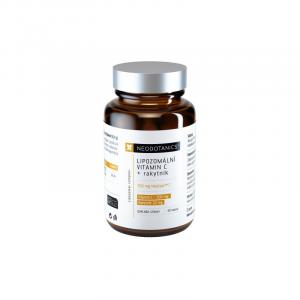
Chimichurri will bring freshness and flavor to every dish

What is Chimichurri and Why It Shouldn't Be Missing in Your Kitchen
In recent years, chimichurri sauce – a fragrant, fresh, and spicy dressing originating from Argentina – has subtly made its way into Central European kitchens. You may have spotted it at a barbecue party as a meat complement or heard about it from friends who love exotic foods. But what exactly is chimichurri, and why is it gaining such popularity outside of South America?
Chimichurri (pronounced "chee-mee-choo-ree") is a herbal sauce or dressing characterized by its slightly sharp taste, freshness, and versatility. Traditionally, it's served with beef steaks, but its use is much broader – it pairs well with fish, vegetables, tofu, sandwiches, or as a marinade. It's a perfect example of how a few simple ingredients can create an utterly irresistible flavor combination.
The Origin of Chimichurri - From the Pampas to Grills Worldwide
The roots of this sauce run deep into the Argentine pampas, where it was favored by local herders – gauchos. During their travels, they prepared simple meals, often meat grilled over an open fire, and chimichurri was their favorite seasoning. Portable, easy to prepare, and full of flavor.
There are several theories about the origin of the name "chimichurri." One of the most widespread suggests it arose from the mispronunciation of the English phrase "give me the curry" during the British settlement of Argentina. Another claims the name comes from the Basque term "tximitxurri," which translates to "a mix of anything." Whatever the origin, one thing is certain – chimichurri has found its way into the hearts of gourmets worldwide.
How to Make Homemade Chimichurri? A Simple and Authentic Recipe
A good chimichurri sauce recipe is like the heart of every summer barbecue – without it, it's just not the same. The good news is that its preparation is not only quick but also affordable. The base consists of parsley, garlic, vinegar, olive oil, and dried oregano. Depending on your taste, you can add chili flakes, lemon juice, or thyme. Some versions include cilantro, but it's not part of the traditional recipe.
Recipe for Authentic Chimichurri:
- 1 bunch of flat-leaf parsley
- 3-4 cloves of garlic
- 2 tablespoons of red wine vinegar
- 120 ml of extra virgin olive oil
- 1 teaspoon of dried oregano
- ½ teaspoon of chili flakes (to taste)
- Salt and freshly ground pepper
Finely chop the herbs (do not use a food processor; the sauce should have texture), crush or finely chop the garlic, and mix everything together. Let it sit for a while, ideally at least 30 minutes, to allow the flavors to meld. And you're done. Chimichurri sauce will keep in the refrigerator for up to a week, tasting even better the next day as all the ingredients blend beautifully.
Variations on Chimichurri – Space for Creativity
Although the traditional Argentine version is based on green parsley, there is also a less known red variant of chimichurri, which includes tomato paste or roasted pepper. This version is richer, smokier, and pairs excellently with grilled vegetables or in sandwiches as an alternative to ketchup.
In some South American countries, cilantro, lime juice, or even honey is added to create a milder sweet and sour version. It all depends on your taste, but that's the charm of this sauce – it can adapt to various flavors and cuisines.
Why Chimichurri Fits into a Healthy Lifestyle
One of the reasons why chimichurri is gaining more fans, even among those who prefer healthy or vegetarian cuisine, is its clean composition without unnecessary additives and preservatives. You don't need any exotic ingredients; everything can be found in a standard store or at a farmer's market.
Moreover, it contains plenty of health-beneficial substances: parsley is an excellent source of vitamin C and iron, garlic has antibacterial properties, and olive oil is known for its healthy fats. If you live sustainably, you'll appreciate that the sauce can be prepared with local and seasonal ingredients.
Try our natural products
Chimichurri in Everyday Cooking
Even though most of us think of juicy beef steak when we hear chimichurri sauce, this herbal delight definitely has more to offer beyond grilled meat. It can be wonderfully used as a salad dressing – when you don't have the usual dressing at hand or are tired of the typical combinations, chimichurri gives leafy greens a whole new kick.
It also works excellently as a sauce for roasted vegetables, such as carrots, sweet potatoes, or even plain potatoes, transforming them into small culinary surprises. And what about as a dip for bread – crispy baguette, rustic bread, or homemade crackers? It's guaranteed to break the monotony at any social gathering. Fans of meatless cuisine will appreciate it when chimichurri is poured over grilled tofu or halloumi, as the intense herbs contrast beautifully with the delicacy of these cheeses.
Finally, if you want to elevate your sandwich to a higher level, try this sauce instead of mayonnaise – it not only adds a spicy note but also feels much fresher. The possibilities are almost endless, and it would be a shame to use it merely as "something for meat."
One user on social media shared how she uses chimichurri as a marinade for tempeh and then bakes it in the oven with sweet potatoes. The result was reportedly so flavorful that even the staunchest meat-eaters didn't realize it was a plant-based dish. Such a story beautifully illustrates how chimichurri can bridge different dietary styles and bring joy to food for everyone.
Grilling Culture and Chimichurri as a Social Ritual
In Argentina, grilling is not just a method of food preparation but primarily a social event. Chimichurri is an integral part of the so-called "asado" – a grilling ritual that often takes place within family circles or among friends. The sauce is prepared in large quantities, everyone adds it according to their taste, and during a pleasant evening by the fire, stories and recipes are shared.
This aspect is interesting for us too – in times when we increasingly strive to slow down, share moments with others, and return to genuine values, chimichurri can be not only a tasty addition but also a symbol of simplicity, hospitality, and the joy of good food.
Chimichurri and Sustainability
In the context of an eco-friendly household, chimichurri holds its irreplaceable place. Preparing it from fresh herbs means less packaging waste, no artificial additives, and the ability to use even those parts of the herbs that would otherwise end up in the compost. If you grow herbs at home, you can make chimichurri entirely from your own resources – without needing to buy anything. It's not only ecological but also economical.
Additionally, it's a vegan, gluten-free, and naturally lactose-free sauce, making it an accessible choice for individuals with dietary restrictions. In times when sustainability and a healthy lifestyle go hand in hand, chimichurri is a beautiful example that good things don't have to be complicated.
Whether you're a meat lover, a vegetarian, a fan of spicy flavors, or just looking for a new way to spice up your everyday cooking, chimichurri is worth trying. It's a sauce that combines simplicity, health, tradition, and a modern approach to food. As an Argentine proverb says: "A good steak needs good company – and chimichurri is the best."







